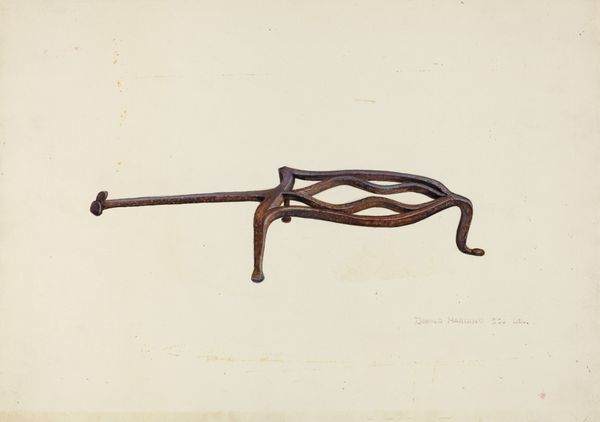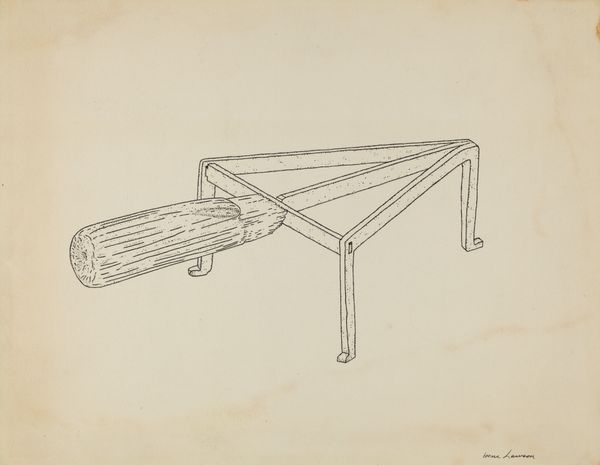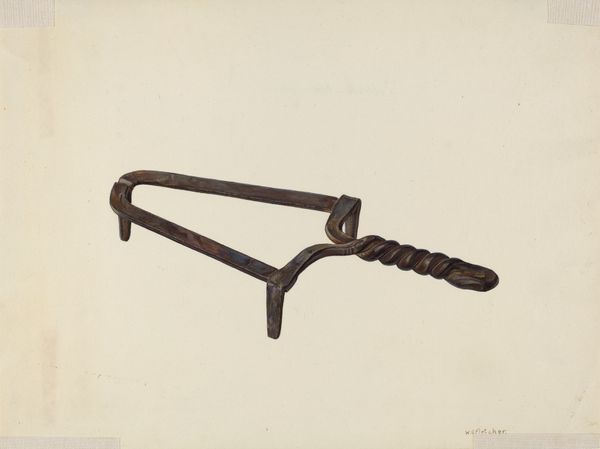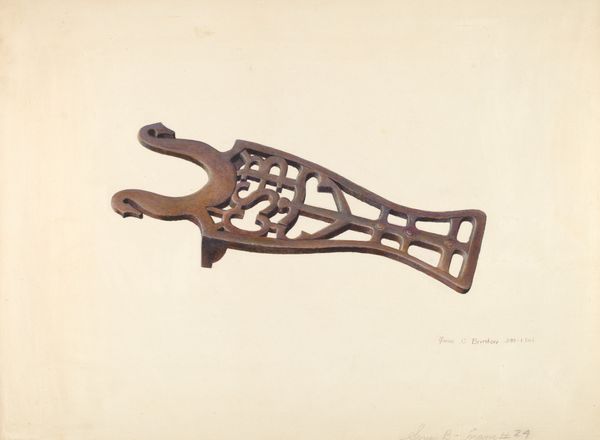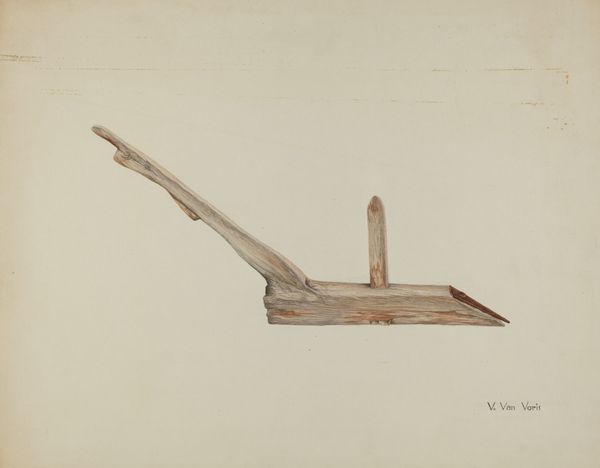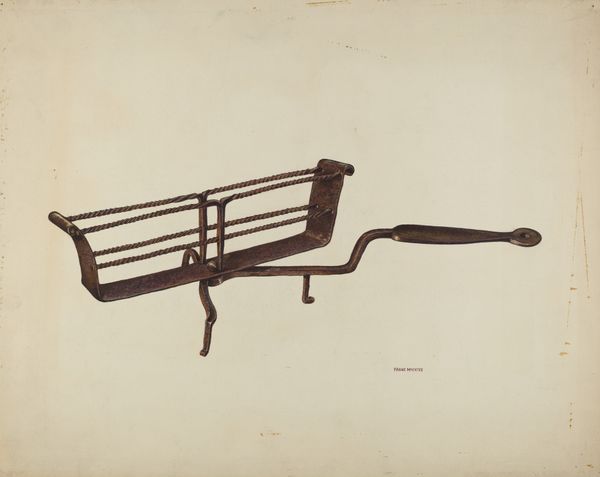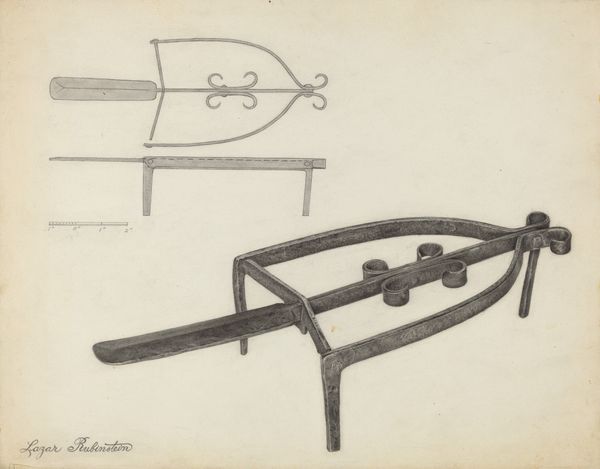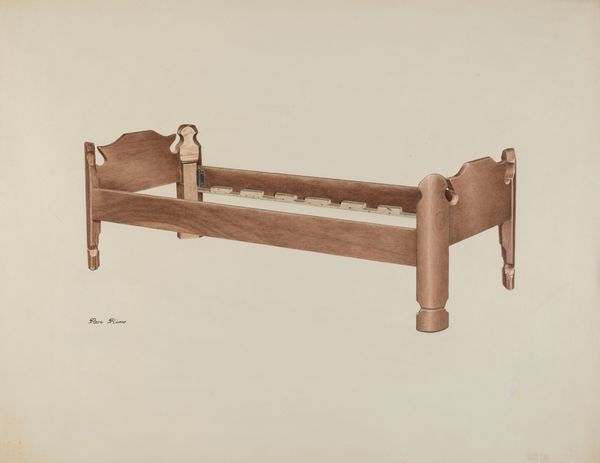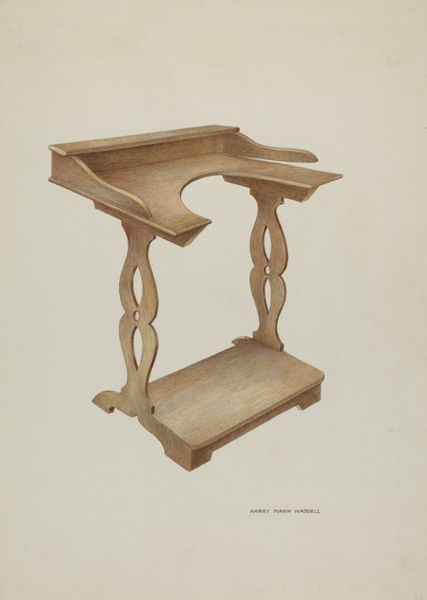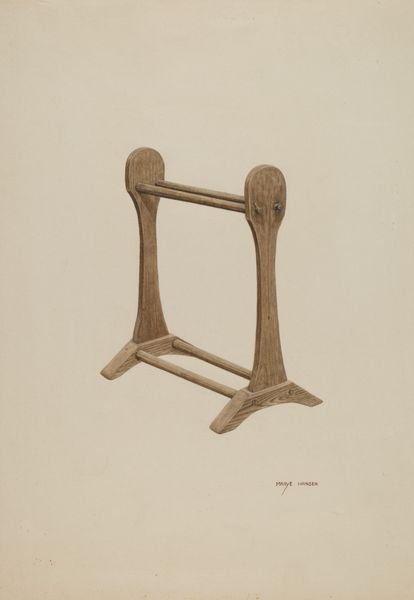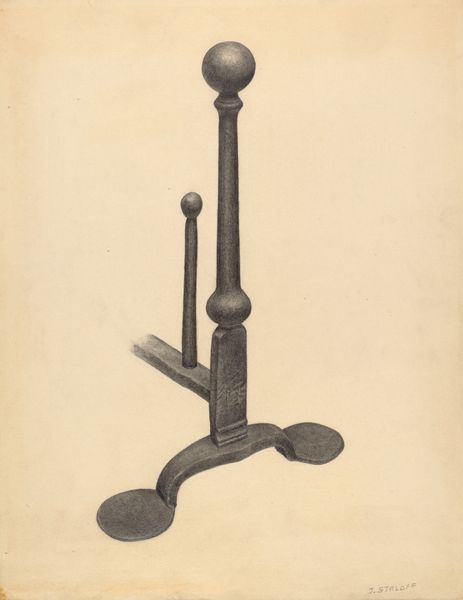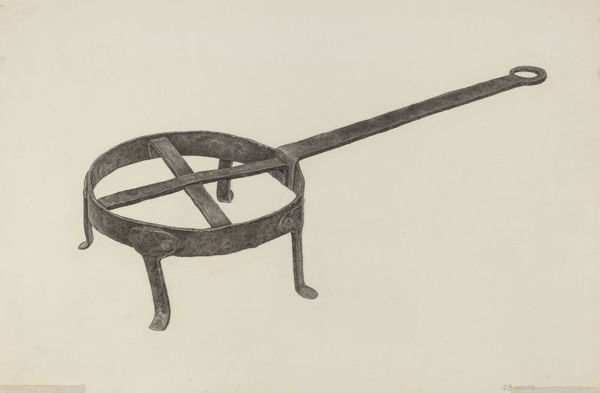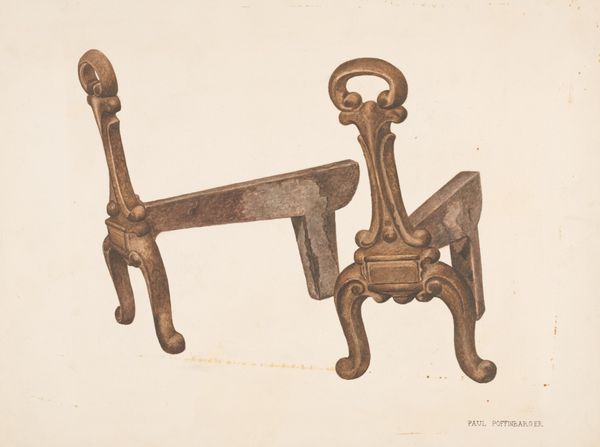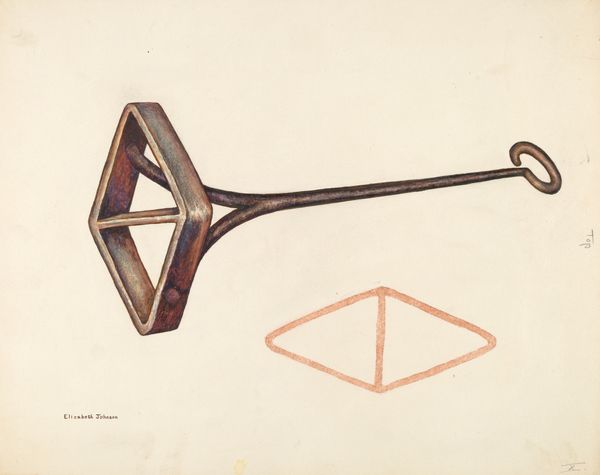
drawing, pencil, wood
#
drawing
#
landscape
#
charcoal drawing
#
pencil drawing
#
pencil
#
wood
#
realism
Dimensions: overall: 30.4 x 38.3 cm (11 15/16 x 15 1/16 in.)
Copyright: National Gallery of Art: CC0 1.0
Curator: Immediately, I feel a sense of austere beauty looking at this. Editor: Indeed. What we're looking at is Lon Cronk's "Shaker Bed," made between 1935 and 1942. It's a drawing using pencil, and possibly charcoal too, depicting a simple wooden bed frame. What stands out to me is the craftsmanship implied here. Curator: I agree, the rendering has a deliberate and almost reverent quality. To me, a bed has such powerful symbolic resonance— it's a place of rest, dreams, but also vulnerability, even death. The bare simplicity amplifies these ideas. It almost feels monastic. Editor: Precisely. Shaker design is all about eliminating the unnecessary. The process was guided by their religious principles: honesty, utility, and simplicity. They were very community driven too, building all kinds of tools for everyone to share. Think about the choice of wood. A local hardwood, something readily available, shaped through labor. The whole community was reliant on these processes to keep its members healthy. Curator: Yes, the bed embodies more than mere furniture; it evokes concepts of refuge and human existence. The shape of the four posts are especially odd, like stylized spindles of some kind. I keep thinking about sleeping, of all things private and psychological that the bed would witness in one's lifetime. All these memories housed by wood and form. Editor: I find it intriguing how a utilitarian object like a bed frame can reveal so much about the cultural and social environment of its creators. The emphasis on unadorned functionality reflects a collective commitment to a shared existence, a resistance to individualism, and a celebration of practical labor. Curator: Ultimately, viewing "Shaker Bed," is a contemplative endeavor for me, urging reflection on fundamentals: repose, labor, and also mortality. Editor: And for me, it underscores how even the simplest artifact can offer insight into a community's values and relationship to their environment. It challenges the hierarchy between fine art and craft, reminding us of the significance embedded in everyday objects.
Comments
No comments
Be the first to comment and join the conversation on the ultimate creative platform.
